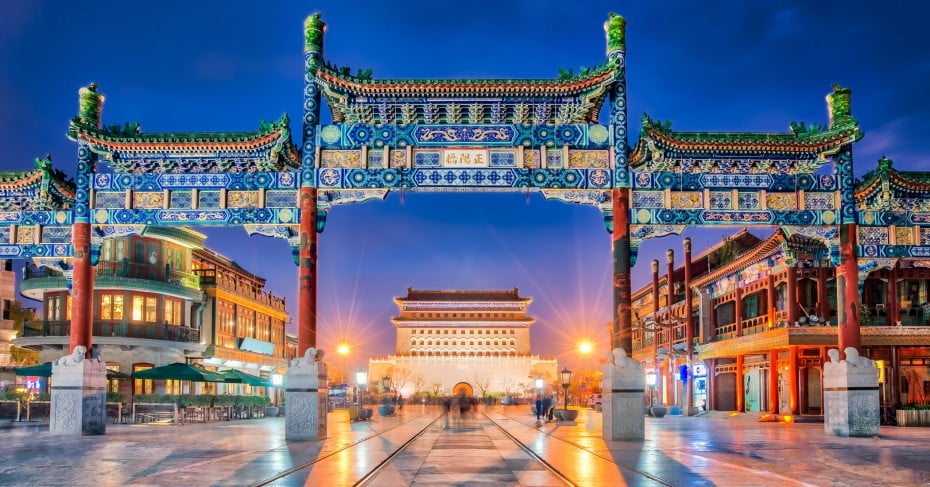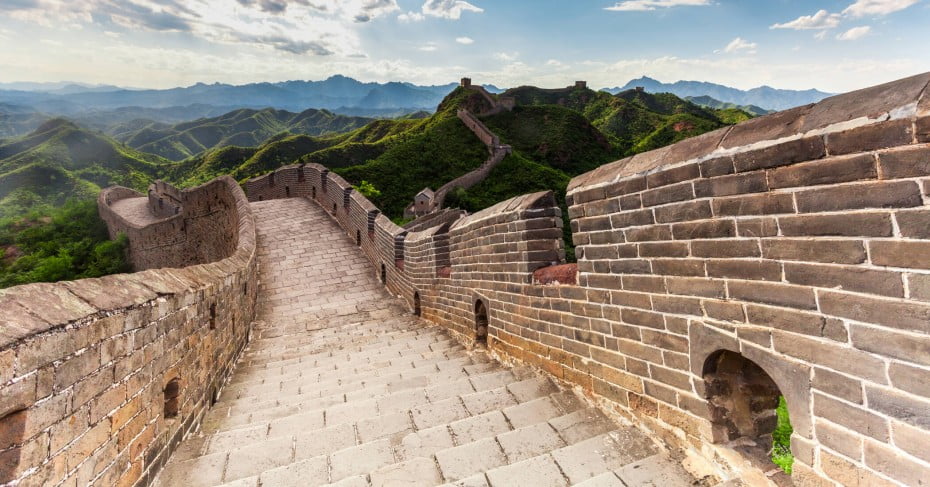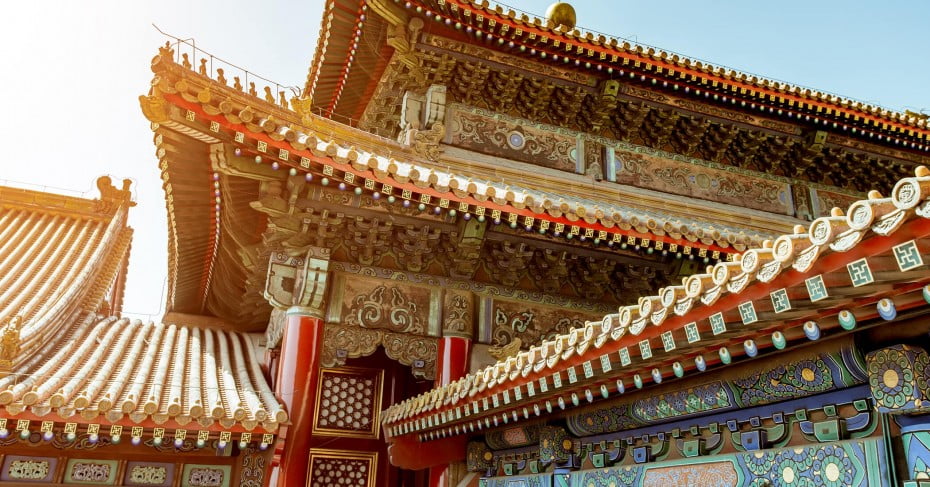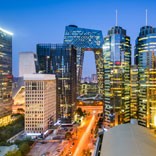Discover Beijing
Beijing has a rich Imperial history dating back hundreds of years, and yet still has all the comforts and glamour of a modern city.
In Beijing you can explore narrow hutong alleyways that are centuries old, buying curios and souvenirs in shops that look and feel wonderfully authentic. You can also delve into the UNESCO heritage sites of the Forbidden City and the Temple of Heaven to admire treasures from a glorious and tumultuous past. And how about a stroll along one of the wonders of the world? There are four sections of the Great Wall of China close to Beijing - see one, two or all of them. Beijing is also a launch point for further travels into China, including the exciting city of Shanghai.

Where to go and what to see in Beijing
Beijing is an ancient city with modern luxuries. While you'll find six incredible UNESCO heritage sites close by, it's also a contemporary urban environment with an excellent subway system (planned to be the biggest in the world!), extensive bus network, and Uber as well as traditional taxis. Beijing's complex and often combative history has made it a place of intricate temples and palaces spiced up with conflict and battles. Although some old areas have made way for new structures, you can still visit hutongs (laneways) to see an ancient way of life, and eat Peking Duck in courtyards that look the same as they did 600 years ago.
Exploring Beijing's fascinating past
There are so many tours, attractions and things to do in Beijing, it can be a little overwhelming at first. We recommend starting in the centre of town, with Tiananmen Square, which houses remnants of the city's extraordinary history. On the north of the square, admire the Gate of Heavenly Peace. Follow the imposing citadel walls around until you reach the Forbidden City entrance. This palace has 9,999 rooms filled with relics from the Ming and Qing dynasties.
The Great Wall is another must-do for Beijing explorers. There are four sections of wall within easy reach of the city and each offers something different. Badaling is the most visited section, while Jinshaling is lengthy - ideal for a walk to work off last night's dumplings! Mutianyu has been carefully renovated and offers luge rides. Simatai has not been as restored as other sections, but is known for its atmospheric night tour. You can't help but admire the huge undertaking the Great Wall represents and the determination required to build these incredible chunks of world history.
While in Beijing you also have to visit the Imperial Summer Palace at the edge of Kunming Lake. In winter this lake it turns into a 700,000m2 ice rink.

The aromas, flavours and textures of Beijing
If you love food, then you're researching the right city. Beijing is a melting pot for China's cuisine scene and restaurants draw on influences from all over the country, as well as from the Mongolian, Japanese, Portuguese and Korean invaders. Arguably, the most famous Beijing dish is Peking Duck. The crispy duck skin and tangy sauce that identify this recipe are admired all around the world, but here you can experience the original.
Another Beijing food highlight is watching hand-pulled noodles being created from scratch. It's a kind of food circus act that culminates in a silky-smooth bundle of ready-to-cook noodles. The only thing better than watching is eating! Or slurping, if you order a classic noodle soup.
Follow the imposing citadel walls around until you reach the entrance to the Forbidden City. This palace has 9,999 rooms filled with relics from the Ming and Qing dynasties.
As you'd expect, Beijing has an incredible street food scene. For breakfast, you must try jianbing from a local vendor - it's a pancake stuffed with omelette, herbs, lettuce, crispy strips of wonton and sauces. For lunch, fill up with Jiaozi dumplings, which come in an array of traditional and not-so-traditional flavours. Come dinner time, try chuan'r - thinly sliced meat served on skewers. It's cooked over a smoky grill and flavoured with pepper flakes, cumin and sesame. If you're still hungry, then youtiao (Chinese doughnuts) or bingtanghulu (fruit on skewers covered in candy, similar to toffee apples) will satisfy your sweet tooth.
As well as traditional fare, Beijing offers plenty of modern Asian options and a burgeoning hipster craft beer scene.

Expanding your holiday into China
Don't limit yourself to Beijing, because there are plenty of other cities to explore only a short domestic flight away. Here are some possibilities:
- Xian was once the beginning of the Silk Road and is the oldest of China's capitals. The amazing Terracotta Army, a force of thousands of life-sized warriors, dates back to 210 BC. Walk or bike the 14km city wall, complete with gates, towers and archer stations. Explore the narrow bazaars and streets of the Muslim Quarter, where you'll see Islamic-Chinese fusion architecture.
- Shanghai is the face of modern China. It has towering high rises, an airport train that reaches up to 430kph and large historic areas with buildings that represent hundreds of years of history.
- Chengdu dates back to 400 BC and is well known for its mouth-numbing Sichuan-spiced cuisine. The Chengdu Research Base of Giant Panda Breeding has about 50 pandas and a panda museum. From August to September, you can watch fluffy, bumbling new-born pandas play in their nursery.
- If you need a break from the bustling cities, Guillin is the entry point to Yangshuo County. Forested mountain areas are speckled with limestone karsts and interspersed with lush terraces of rice paddies. Cruise the Li River, take a guided bike tour, walk through the rural villages and immerse yourself in this beautiful slice of rural China.
And that's not all. There is so much more to do in China, from the rocky peaks and plunging canyons of Wulingyuan Scenic Area just out of Zhangjiajie, to skiing and an ice and snow festival in Harbin. China has about 9.5 million square kilometres of exotic scenery to explore - anything is possible!
Essential information

Best time to go
The weather varies throughout the seasons. Winter, from December to February, is very cold and temperatures can drop into the sub-zeros, but it is dry. June to August is hot, peaking in the low 30s, with occasional rainstorms. The shoulder seasons from September to November and April and May are most pleasant, with moderate temperatures and minimal rain.

How much will it cost?
Not including air travel and hotels, you should allow about USD $70 to $100 a day per person for food and entertainment.
Redefining the long haul experience
Air New Zealand - seven times Airline of the Year winner
Airline of the Year and Best Economy Class by Airlineratings.com. New Zealand's Employer of the Year by Ranstad. Top Cabin Concept for Skynest at Crystal Cabin Awards. And much more.

